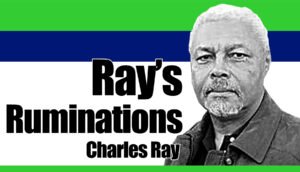
September is the island of Siquijor’s milestone month as it celebrates annually what the residents call as Siquijor Day. The merriment and festivities, however, last for an entire month with diverse happenings that both locals and tourists are able to enjoy and take part in.
In the book, Siquijor’s Mystical Wonders, the magic of Siquijor never ceases to amaze people. Whether you are a first timer or a perennial visitor, Siquijor always has something new to offer.
Siquijor also has its original legends. Take, for example, the municipality of Larena and its legends of Barangays Bagacay, Calunasan, Basac, and Cabulihan.
According to the story narrated by the old folks, Barangay Bagacay got its name from the thornless bamboo grass known as “bagacay” in the local dialect due to the abundance of this kind of plant in the area. Amazed by the uniqueness of this kind of bamboo without thorns, strangers were prompted to inquire about this shrub. The strangers learned from residents that “bagacay” was the name of this kind of bamboo and that different products could be manufactured out of it such as bamboo splits, bamboo poles, home decors, coin bank, bamboo posts, and many others. Out of interest and curiosity, the strangers asked the residents the name of their place and without any second thought, the residents answered in chorus, “bagacay.” From that time on, the place became known as Barangay Bagacay.
For Barangay Calunasan, it was related that once upon a time, there was an old man with a hat on his head, who usually walked on the road leading to the sea. The man with a slouchy posture used to go fishing and gathering sea shells. While on his way, he met a 3-year-old boy who was inquisitive as to ask the old man what was that thing over his head. The good-natured old man did not want to disappoint the child, so he told him that it was “kalo,” meaning hat. The observant child noticed the small basket with a string tied around the waist of the old man. The boy asked the old man what is that thing around his waist. The old man told him it was “kinhasan,” meaning container of gathered sea shells.
On his way home, the young boy pondered about the utterances of the old man – kalo and nasan. Upon reaching home, he recounted his encounter with the old man and described to his parents what he saw on the man’s head and around his waist. He told them those were kalo and nasan. As years went by, kalo and nasan became kalonasan and emerged as Calunasan, the name of the barangay.
Moreover, for Barangay Basac, it has been said that once upon a time, Basac had no name at all. It was only known as a place with very cool climate and with wet and muddy soil. Residents cultivated the land into “basakan” or rice field, having known that wet and muddy soil was ideal for rice farming. This place was also blessed with naturally abundant nipa or “saksak.” This natural resource called “saksak” was a good source of standard roofing material by their forefathers.
As a gesture of gratitude to God for these dual gifts — the “basakan” and the “saksak,” the residents agreed to coin the first syllable of the word “basakan” with the last syllable of the word “saksak” to form the word, Basak and made it the official name of their barangay. On the course of its evolution, the last letter “k” of the word was changed to letter “c,” thus, it has a new spelling, Basac.
When the Spaniards came to Siquijor Island, a group of foreigners arrived in Barangay Cabulihan. At that time, Cabulihan was still big in land area; it extended from the seashore of Cangmalalag, which was then a sitio, uphill to the mountain. While the foreigners strolled from the shore up to the mountain, they noticed several palms with big rounded trunks and long, wide leaves with thorny stems.
These palms were abundant at that time. When these foreigners met a resident of the locality, they asked him about the name of the palm. The resident told the foreigners that the palm was called buli in the vernacular. With that information, the foreigners were inspired to name the place Cabulihan to give credence to the abundant existence of “buli” in the area.
More mystical legends of the island of Siquijor in the coming issues. | NWI




